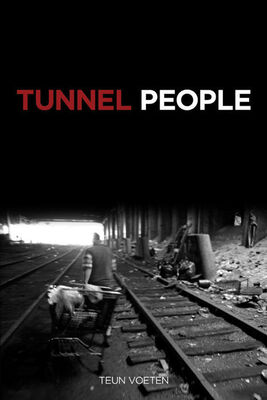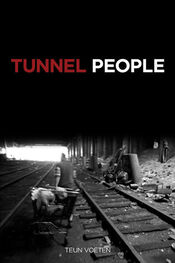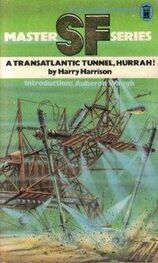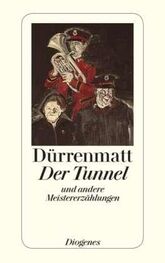The only intention of my book is to give some insight to the souls of the tunnel people. I hope I have succeeded.
Teun Voeten Brussels 1996
A SHORT NOTE TO THE 2010 TRANSLATED AND UPDATED EDITION
Tunnelmensen was originally published in the Netherlands in 1996. More than thirteen years have passed since the tunnel people had to leave their underground spaces they called home. I managed to track down most of the former tunnel dwellers. Some have died, some have simply disappeared, but most of them are still in the housing they were offered and are doing remarkably well. The final chapter describes the results of my quest for the former tunnel people thirteen years later.
I have left the theoretical chapter fifteen on “The Homeless Debate” largely as it is, but changed its title to “The Homeless Debate of the ’90s,” to accentuate that it was a theoretical discussion that took place a decade and a half ago.
Most things discussed in that chapter still make sense today. One of the newer developments, however, is the huge increase in the number of the homeless, especially families. During the ongoing economic crisis that has caused lay-offs and foreclosures on a scale not seen since the Great Depression, large numbers of people have been and continue to be pushed over the edge. This includes not only the poor, but also thousands of people from the middle classes. Exact numbers and statistics are not yet available, and many victims of the crisis have explored all other possibilities—friends, families, cheap lodgings—before actually hitting the streets. The emergence of tent cities on the outskirts of big cities, the increasing demand for shelter beds, and longer lines for free food are, however, a strong indicator of the seriousness of the current situation.
Not only homelessness, but also the amount written about it, has multiplied. When I finished Tunnelmensen in 1996 there were perhaps five books and twenty articles considered to be absolutely essential. Today, I can think of dozens of books, and have stumbled upon hundreds of articles that are extremely interesting. To update my book, I have only briefly gazed over this new body of literature. New and relevant findings and facts were processed in the endnotes. To get a good idea of the current situation of the homeless, I would like to recommend the work of Kim Hopper, Brendan O’Flaherty, Thomas Main, Sam Tsemberis, and Dennis Culhane.
I hope this updated version of Tunnel People will shed some more light on the complex problem of homelessness. Much too often, homelessness is discussed in dry, academic studies. Journalistic reports can be superficial, and often tend to either sensationalize or romanticize those homeless living underground. I hope my book will help demystify this group and portray them as the complex, unique individuals they all are. True, in many ways they are very different from us, but in many ways they are just folks like you and me.
Teun Voeten New York 2010
Part 1
AUTUMN
November & December 1994
The mouth of the tunnel looms a few hundred feet wide. Broken down railroad tracks wind between a forest of steel and concrete pillars and disappear into the darkness, into the netherworld I am about to enter. Professor Terry Williams leads me inside the tunnel, into the unknown. Slowly, the daylight disappears behind our backs, until we are engulfed by a cold, damp darkness. I shiver. I don’t like dark caves with hidden dens, and to make it even worse, today is Halloween. I’m not in the mood for crazy tunnel people popping up out of the darkness with Dracula masks and bloody butcher knives. Quietly I curse at Williams, who thought today would be the perfect day to bring me into the tunnel.
The entrance of the tunnel is under a fly-over from the West Side Highway, where Riverside Park starts at 72 ndStreet. The park is a narrow green strip that stretches along the Hudson till it reaches the tip of Manhattan. On the east, the park borders posh apartment buildings. Farther up north along the park, the cozy and comfy West Side slowly transforms into the projects of Harlem to finally end in the mean streets of Washington Heights. And right underneath the park winds the tunnel, in a near perfect straight line from south to north, fifty blocks long. In the park people are jogging, yuppies are walking their dogs, young mothers push their strollers, without knowing that right underneath their very feet is a hidden underworld.
At the entrance of the tunnel, people have chained shopping carts with old clothes and empty bottles to a fence. The blades of a discarded fan turn slowly in the chilly November breeze. The hundreds of pillars that support the ceiling are covered in tags and graffiti. Here at the entrance, the ceiling is actually an elegant, late-nineteenth-century cast iron construction. One hundred years ago, this place was a busy terminal for riverboats and freight trains. At the end of the ’60s, the terminal became obsolete and slowly deteriorated into a no man’s land where only the intrepid or the desperate ventured.
In between the wood of the pillars, I see little shacks. Some are cubicles, constructed quite laboriously from plywood and tin sheeting, other are just sloppy tents flung together with some poles and plastic sheets.
“Some new shacks since I was here last time,” Williams says. In the dark, people are warming themselves around a fire that’s burning in an empty oil drum. Farther down, a man is sawing a giant piece of wood.
We descend deeper into the tunnel. Some train tracks have dead ends and are covered by garbage. Other tracks merge through rusty switches. In the darkness we stumble over old clothes, broken bottles, empty boxes, wrecked shopping charts. I stumble over a book. With my flashlight I see it is a copy of Lord of the Flies. A nauseating smell of rotting garbage and excrement penetrates my nose. Rats are rummaging through waste but flee when we approach to disappear into holes and cracks beneath the tracks. I’m glad I just had my tetanus, diphtheria, and typhoid shots renewed.
After what seems like half an hour, there is no more daylight left. Now it has become pitch black. With my flashlight I see the tunnel has narrowed with only two train tracks left.
“Watch out for booby traps,” warns Williams. “Some people here don’t like visitors and have dug deep holes. You’ll break your leg if you fall in one of them.” Maybe Williams wants to scare me, or maybe he is paranoid. He might also be right, so I just follow his example and proceed by walking on the tracks.
After fifteen minutes of walking, the tunnel bends slightly to the right and we cannot see the entrance any more. Faint daylight falls through grates in the ceiling. The park should be right above us. We hear children playing and yelling. Underneath the grates, the tunnel widens and we enter a space with some concrete bunkers. Williams explains that these bunkers were used by maintenance workers to take their lunch breaks and store their equipment. A deafening barking rings through the tunnel. On top of one of the bunkers is a dirty pack of dogs. An old man appears from behind a moldy carpet that covers the entrance of the bunker. “Joe, everything okay?” calls Williams. The old man grumbles something and returns to his bunker.
“Well, Joe isn’t in the mood today.” Williams shrugs his shoulders. Joe is a Vietnam vet who has been living in the tunnel for over twenty years, Williams tells me. He lives together with his wife Cathy and their thirty cats. The dogs belong to his neighbor.
We continue. It becomes pitch black again for ten minutes, and with our weak flashlights we stumble through the darkness. Then, there are more grates piercing the roof at regular intervals. A dim light drives the darkness away. After another ten minutes of walking, we come to another widening with six, seven bunkers. “We’ve arrived,” says Williams, “Bernard’s camp.”
Читать дальше





